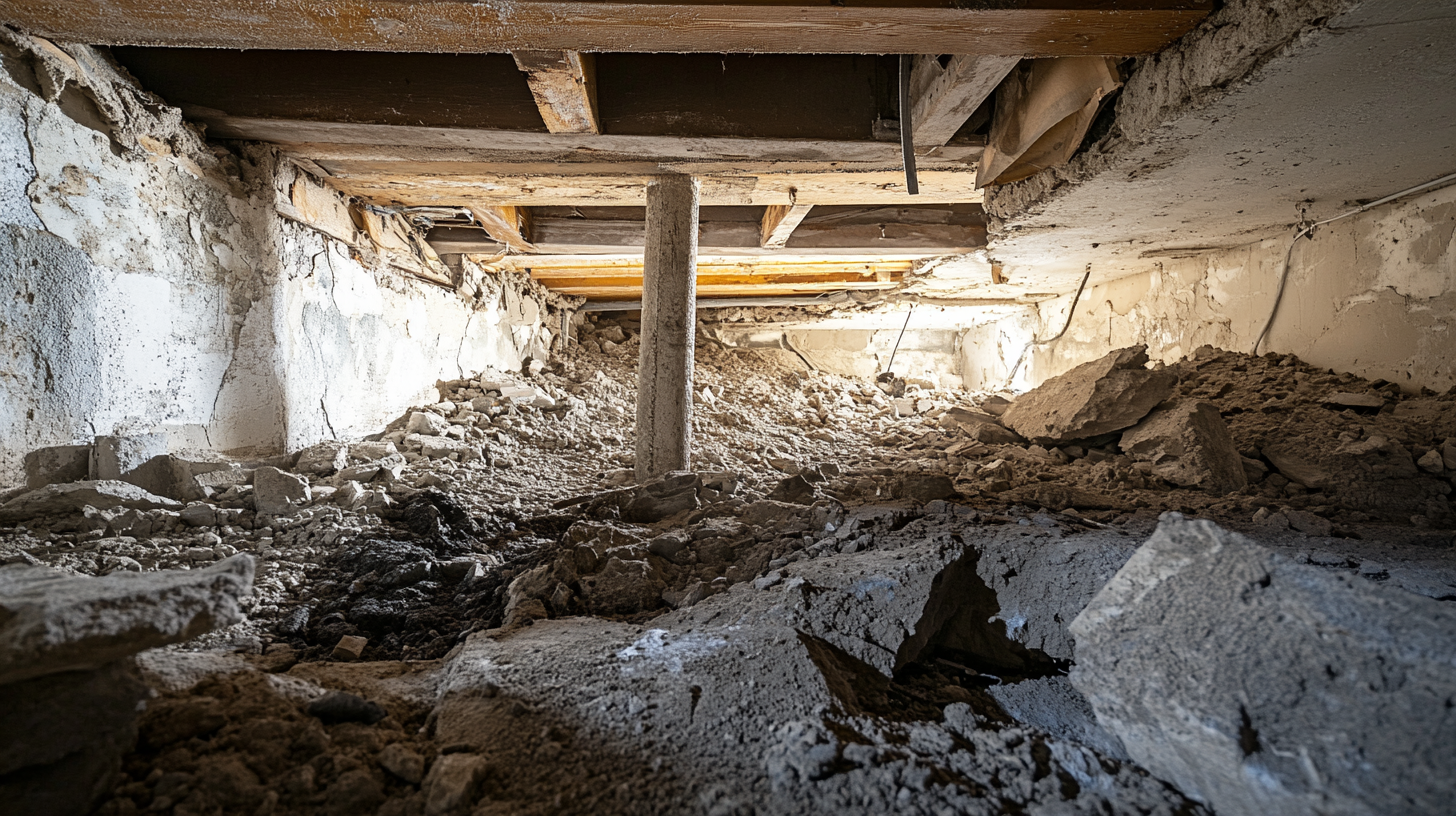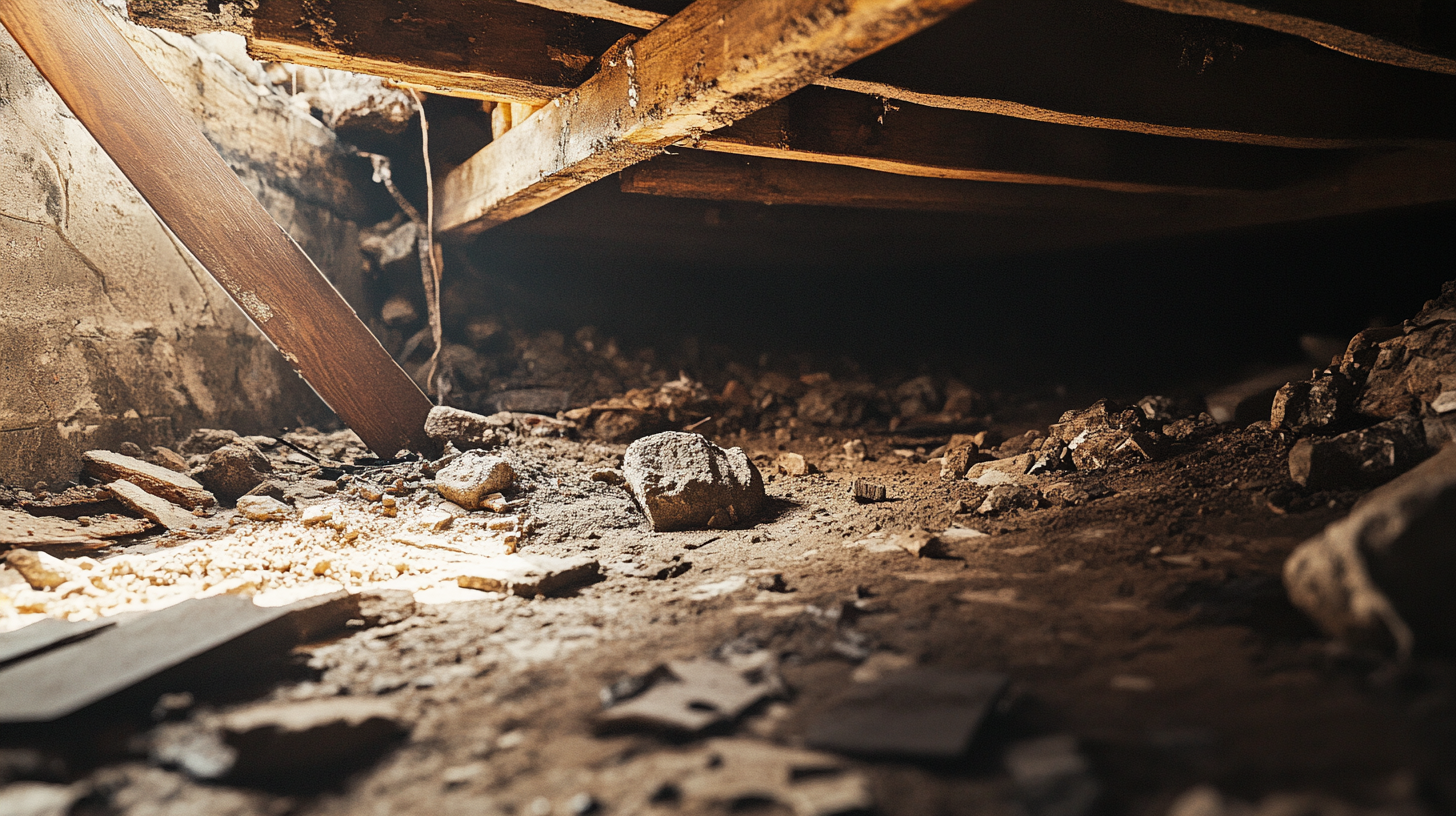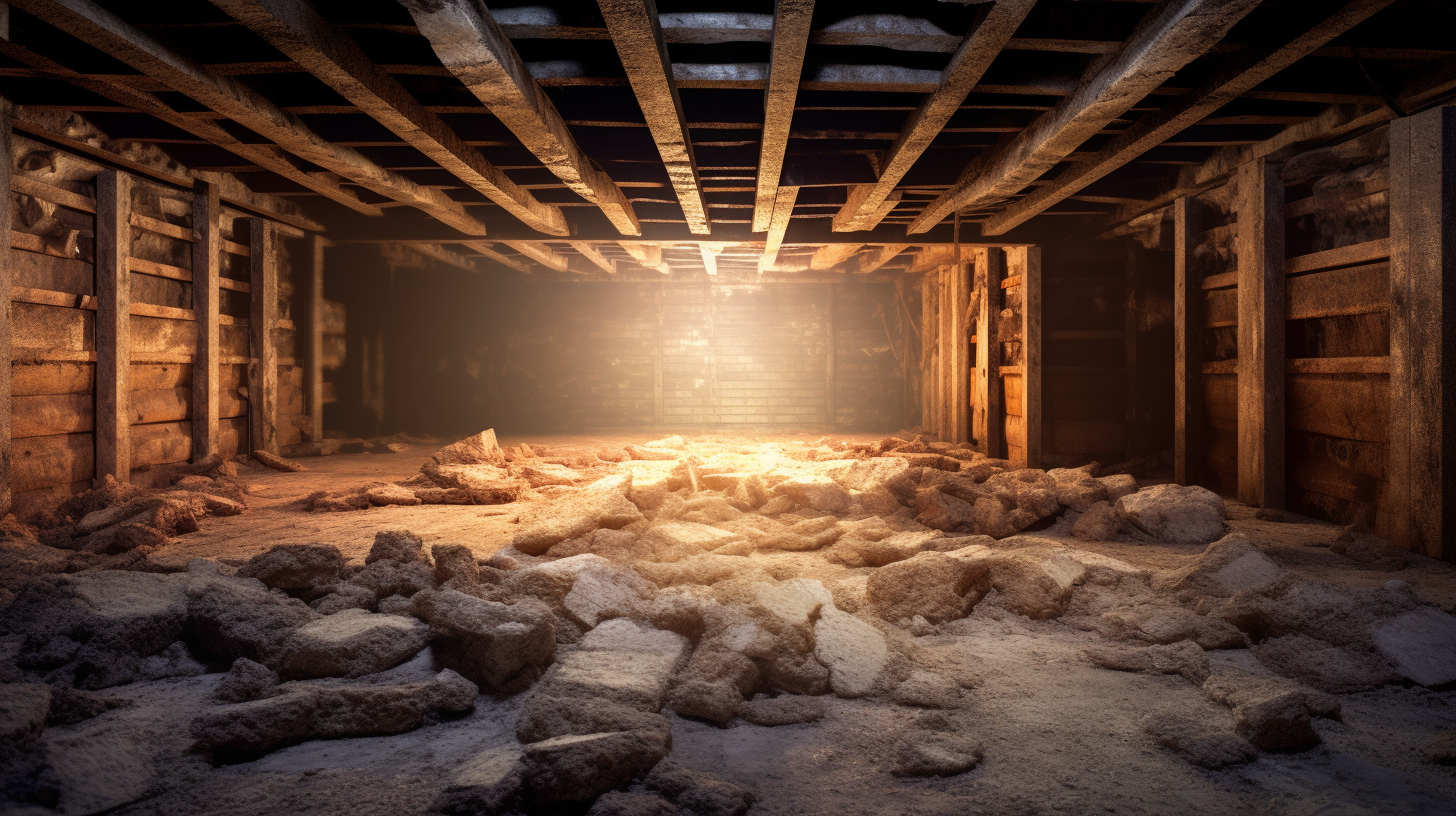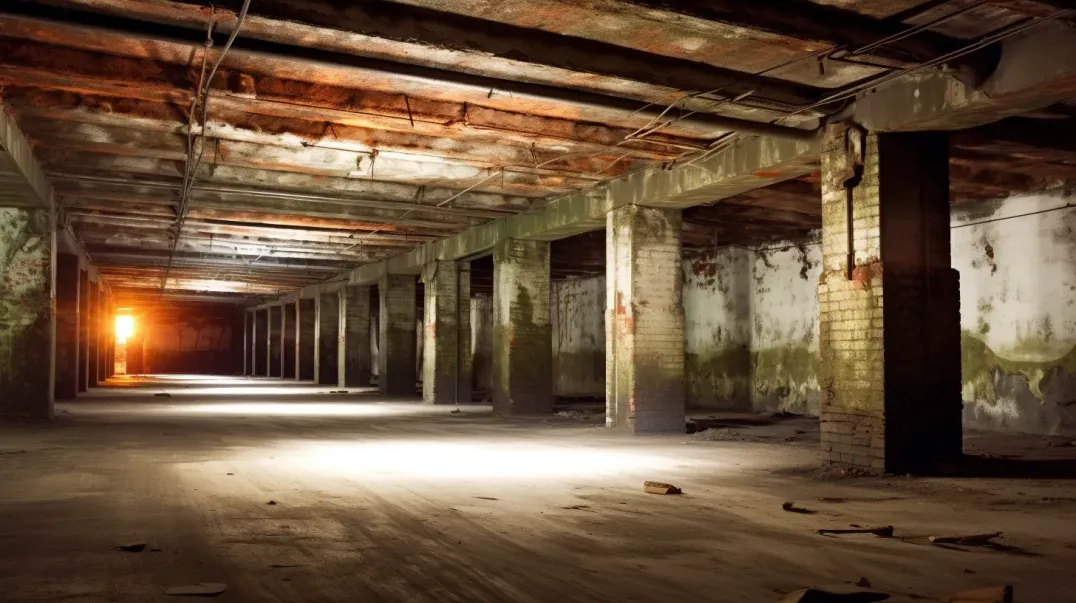Beneath the floorboards of our homes lies a hidden labyrinth often overlooked yet crucial to the health and longevity of our living spaces—the crawl space. This concealed area, when neglected, can become the Achilles' heel of a home's well-being, harboring moisture, fostering mold, and inviting a host of structural and air quality issues. However, with proper attention and care through effective ventilation, the crawl space can instead serve as a foundation of health and stability. This blog delves into the vital importance of crawl space ventilation, shedding light on how this often-underrated aspect of home maintenance plays a pivotal role in preserving the integrity of our homes and the quality of the air we breathe.
Crawl space ventilation is not merely a building code checkbox but a fundamental practice in ensuring a home's resilience against moisture-related challenges. From preventing the proliferation of mold and mildew to deterring the presence of pests and ensuring the structural timber remains dry and strong, the benefits of a well-ventilated crawl space extend throughout the entire home. Moreover, as the quality of air in our living spaces is intricately linked to the conditions within our crawl spaces, effective ventilation becomes synonymous with healthier indoor environments—free from musty odors, allergens, and pollutants that can compromise our well-being.
In exploring the importance of crawl space ventilation, we will navigate through the principles that govern effective air circulation, the consequences of neglect, and the transformative impact that proper ventilation can have on a home. Whether you're a new homeowner embarking on the journey of home maintenance or a seasoned inhabitant looking to enhance your living space's health, understanding the critical role of crawl space ventilation is the first step towards ensuring your home remains a sanctuary of comfort, safety, and well-being.
Join us as we uncover the breath of your home, emphasizing why crawl space ventilation deserves your attention and how it can be the key to unlocking a healthier, more durable living environment.
Understanding Crawl Spaces
Crawl spaces are an integral part of many homes, serving as a foundational area that can significantly impact the overall health and stability of the structure. Despite their importance, crawl spaces are often overlooked by homeowners. Understanding what a crawl space is, its role in a home, and why proper ventilation is crucial can help homeowners maintain their properties more effectively and prevent potential issues.
What is a Crawl Space?
A crawl space is a type of foundation used in building construction to create a gap between the ground and the bottom of a house. Typically, a crawl space is high enough for someone to enter by crawling, as its name suggests, but not high enough to stand up in. This area can house plumbing, electrical wiring, and HVAC systems, making it easier for these systems to be installed and maintained. Common features of a crawl space include a dirt or gravel floor, foundation vents, and access doors for entry and inspection.
The Role of a Crawl Space in a Home:
The primary role of a crawl space is to elevate the home off the ground, which is particularly beneficial in damp or flood-prone areas to prevent water damage. Additionally, crawl spaces allow for easy access to plumbing and electrical systems for repairs and maintenance. By providing ventilation under the home, crawl spaces can also help regulate moisture levels, although this depends significantly on proper maintenance and ventilation practices.
Why Ventilation is Crucial
Proper ventilation in a crawl space is essential for several reasons:
- Moisture Control: Effective ventilation helps to reduce moisture levels in the crawl space. Moisture can accumulate from the ground, outdoor air, or from leaks in plumbing fixtures. By circulating air, ventilation helps to dry out excess moisture, preventing it from causing damage to the home.
- Preventing Mold and Mildew: High moisture levels create an ideal environment for mold and mildew growth. These fungi can not only damage the structure of the home but also degrade air quality, potentially leading to health issues for the inhabitants. Ventilation reduces moisture, thereby limiting mold and mildew growth.
- Ensuring Structural Integrity: Moisture is a major enemy of structural integrity, as it can lead to wood rot and corrosion of building materials. By maintaining lower moisture levels, ventilation helps preserve the materials used in the construction of the home, ensuring its longevity and stability.
Properly designed and maintained crawl space ventilation is crucial for protecting a home from moisture-related issues, ensuring the durability of its structure, and maintaining healthy indoor air quality. Homeowners should regularly inspect their crawl spaces and consider professional assessments to ensure that ventilation systems are functioning effectively and that their homes remain safe and comfortable living environments.
Basics of Crawl Space Ventilation
Crawl space ventilation is a critical aspect of home maintenance that plays a vital role in preserving the structural integrity of your property, preventing moisture-related issues, and ensuring a healthy living environment. Understanding how ventilation works and the key components involved can help homeowners make informed decisions about their ventilation systems. This guide covers the fundamentals of crawl space ventilation, including its operation and essential components.
How Crawl Space Ventilation Works
Natural vs. Mechanical Ventilation:
- Natural Ventilation: This method relies on the natural flow of air to ventilate the crawl space. Vents installed around the perimeter of the crawl space allow outside air to circulate through the area, carrying moisture out with it. The effectiveness of natural ventilation largely depends on the climate, weather conditions, and the proper placement and size of the vents.
- Mechanical Ventilation: Mechanical systems use powered fans and other equipment to control the air flow in the crawl space. This method can be more effective in regulating moisture levels, especially in climates where natural ventilation may not suffice. Mechanical ventilation can be tailored to the specific needs of the crawl space, offering more precise control over humidity and temperature.
The Concept of Cross-Ventilation:
Cross-ventilation is crucial for effectively airing out a crawl space. By strategically placing vents on opposite sides of the crawl space, air can flow in through one side and out the other, creating a cross-breeze that helps to keep the area dry. This method enhances the efficiency of both natural and mechanical ventilation systems by ensuring a continuous exchange of air.
Components of a Ventilation System
Vents:
Vents are the most basic component of a crawl space ventilation system. They are typically installed in the foundation walls and can be adjustable or fixed. The size and number of vents are important factors in achieving adequate ventilation, with building codes often specifying minimum requirements based on the size of the crawl space.
Fans and Dehumidifiers:
Fans: Ventilation fans are used in mechanical systems to actively move air through the crawl space. They can be particularly effective in larger crawl spaces or areas with persistent moisture issues.
Dehumidifiers: A dehumidifier can be an essential component of a crawl space ventilation system, especially in humid climates. By removing moisture from the air, dehumidifiers help maintain optimal humidity levels, complementing the work of vents and fans.
Vapor Barriers:
Vapor barriers are materials, typically polyethylene sheeting, laid over the ground in the crawl space to prevent moisture from the soil from evaporating into the crawl space air. While not a ventilation component per se, vapor barriers work in conjunction with ventilation to control moisture levels effectively.
Understanding the basics of crawl space ventilation and the components involved is the first step toward ensuring your home remains structurally sound and free from moisture-related problems. Regular inspections and maintenance of your crawl space ventilation system can prevent a host of issues, contributing to a healthier and more comfortable home environment.
Planning Your Crawl Space Ventilation
Proper ventilation in your crawl space is crucial for maintaining the structural integrity of your home, preventing moisture-related issues, and ensuring a healthy living environment. Planning your crawl space ventilation involves a careful assessment of your specific needs and implementing best practices to achieve optimal airflow. This guide will help you understand how to assess your ventilation needs and outline the best practices for establishing and maintaining an effective crawl space ventilation system.
Assessing Your Needs
Understanding Local Climate:
The climate in your area plays a significant role in determining your crawl space ventilation needs. Humid climates may require more aggressive moisture control strategies, such as additional ventilation or the use of dehumidifiers, to prevent excess moisture buildup. In contrast, dryer climates might necessitate minimal ventilation to avoid over-drying and potential shrinkage of wooden structures.
Evaluating the Size and Condition of Your Crawl Space:
Size: The size of your crawl space directly impacts the amount of ventilation needed. Larger crawl spaces may require more vents or mechanical ventilation systems to ensure adequate airflow throughout the entire area.
Condition: Assess the current condition of your crawl space, looking for signs of moisture problems, mold growth, or inadequate existing ventilation. The presence of these issues may indicate the need for an upgraded ventilation system or additional moisture control measures.
Ventilation Best Practices
Ideal Vent Placement:
Vents should be strategically placed around the perimeter of the crawl space to facilitate cross-ventilation. This ensures that fresh air can enter from one side and exit through the opposite side, effectively removing moist air and promoting dry conditions.
Calculating the Right Amount of Ventilation:
A general rule of thumb for crawl space ventilation is to have at least 1 square foot of vent area for every 150 square feet of crawl space floor area. However, this can vary based on local building codes and the specific needs of your home. In some cases, especially in humid climates or homes with existing moisture issues, additional ventilation or mechanical systems may be necessary.
Tips for Maintaining an Effective Ventilation System:
- Regular Inspections: Conduct regular inspections of your crawl space and ventilation system to ensure vents are clear of obstructions and functioning properly.
- Clean and Repair Vents: Keep vents clean and free from debris, and repair or replace damaged vents promptly to maintain optimal airflow.
- Consider a Vapor Barrier: Installing a vapor barrier on the crawl space floor can help reduce ground moisture evaporation, complementing your ventilation efforts.
- Monitor Humidity Levels: Use a hygrometer to monitor humidity levels within your crawl space, adjusting your ventilation strategy as needed to maintain healthy conditions.
By carefully assessing your crawl space ventilation needs and implementing best practices, you can create an effective system that protects your home from moisture-related issues and contributes to a healthier indoor environment. Regular maintenance and adjustments based on changing conditions or the results of ongoing monitoring are key to ensuring the long-term effectiveness of your crawl space ventilation plan.
Common Ventilation Solutions
Proper ventilation is crucial for maintaining a healthy, comfortable, and safe living environment. It helps control indoor air quality by removing and diluting pollutants, managing moisture levels, and reducing the accumulation of indoor allergens. This guide explores common ventilation solutions, including natural and mechanical systems, outlining their advantages, disadvantages, and best practices for effective use.
Natural Ventilation
Pros and Cons:
Pros:
- Cost-effective as it utilizes natural forces (wind and thermal buoyancy) for air movement, requiring no energy consumption.
- Enhances indoor air quality by allowing a continuous exchange of indoor and outdoor air.
- Reduces the need for air conditioning, leading to energy savings.
Cons:
- Reliability can be affected by weather conditions, outdoor air quality, and seasonal changes.
- May not provide sufficient ventilation in all areas of a building, especially in tightly sealed homes.
- Potential security concerns with open windows and vents.
Best Practices for Maximizing Efficiency:
- Cross-Ventilation: Ensure windows and vents are strategically placed across from one another to facilitate cross-ventilation, enhancing the flow of fresh air throughout the space.
- Use of Operable Windows: Incorporate operable windows that can be opened or closed as needed to control ventilation based on weather conditions and indoor air quality needs.
- Thermal Buoyancy: Take advantage of thermal buoyancy by opening lower windows to let cool air in and higher windows to let warm air out, promoting vertical air movement.
Mechanical Ventilation
When to Consider Mechanical Solutions:
Mechanical ventilation systems should be considered in environments where natural ventilation cannot adequately control indoor air quality. This may be due to high outdoor pollution levels, climate extremes, or specific architectural designs that limit natural airflow. Mechanical systems are also essential in tightly sealed buildings where natural ventilation is insufficient to meet air exchange needs.
Types of Mechanical Systems:
- Exhaust Fans: These are commonly used in bathrooms and kitchens to remove odors and excess moisture directly from the source, preventing mold growth and indoor air pollution.
- Dehumidifiers: In humid climates or during damp seasons, dehumidifiers can be crucial for maintaining comfortable humidity levels and preventing moisture-related issues.
- Energy Recovery Ventilators (ERVs) and Heat Recovery Ventilators (HRVs): These systems provide controlled ventilation by exchanging indoor and outdoor air while conserving energy. ERVs additionally transfer moisture, making them ideal for managing humidity in both winter and summer.
- Whole-House Ventilation Systems: These systems provide uniform ventilation throughout the building, ensuring fresh air distribution to all rooms. They can be particularly effective in larger homes or buildings with complex layouts.
Implementing the right ventilation solution requires a careful assessment of your specific needs, considering factors such as local climate, building design, and air quality goals. Whether opting for natural methods or mechanical systems, understanding the pros and cons and following best practices can significantly enhance the effectiveness of your ventilation strategy, contributing to a healthier and more comfortable indoor environment.
Addressing Challenges in Crawl Space Ventilation
Proper ventilation in the crawl space is crucial for maintaining the structural integrity of your home, preventing moisture-related issues, and ensuring a healthy living environment. However, homeowners often face challenges such as high humidity and mold growth, which can compromise the effectiveness of crawl space ventilation. Understanding how to address these challenges is key to protecting your home. This guide explores strategies for dealing with high humidity and preventing and handling mold growth in your crawl space.
Dealing with High Humidity
Signs of Excessive Moisture:
- Condensation on windows or pipes.
- Musty odors emanating from the crawl space.
- Visible dampness or water pooling on the crawl space floor.
- Swelling or warping of wooden structures.
Solutions for Humidity Control:
- Improve Ventilation: Ensure that your crawl space has adequate ventilation to allow moist air to escape. This may involve cleaning existing vents, adding new ones, or considering mechanical ventilation solutions.
- Use a Dehumidifier: Installing a dehumidifier in the crawl space can help maintain optimal humidity levels, especially in climates where outdoor air may contribute to indoor moisture.
- Install a Vapor Barrier: Laying a vapor barrier on the crawl space floor can prevent ground moisture from evaporating into the crawl space air, significantly reducing humidity levels.
- Ensure Proper Drainage: Addressing external water management issues, such as gutter and downspout efficiency and landscape grading, can prevent water from entering the crawl space.
Preventing and Handling Mold Growth
Importance of Regular Inspections:
Conducting regular inspections of your crawl space is vital for early detection of mold growth. Look for visible signs of mold on wood, insulation, or other surfaces, and be alert to musty odors that indicate mold presence.
Steps to Take if Mold is Detected:
Identify and Eliminate the Moisture Source: Mold growth is a symptom of excessive moisture. Addressing the underlying cause of moisture is essential for effective mold remediation.
- Clean and Remove Mold: Small areas of mold can often be cleaned and removed by homeowners using appropriate protective gear and mold removal solutions. However, extensive mold infestations may require professional remediation services.
- Prevent Future Growth: After addressing the immediate mold issue, implement long-term solutions such as improved ventilation, dehumidification, and vapor barriers to prevent mold from returning.
By proactively dealing with high humidity and taking steps to prevent and handle mold growth, homeowners can ensure their crawl space ventilation is effective, protecting their home from moisture-related damage and contributing to a healthier indoor environment.
FAQs
-
Benefits of crawl space encapsulation?
Encapsulation can improve air quality, reduce energy costs by better insulating the home, and protect against moisture-related structural damage.
-
Can I seal my crawl space instead?
Yes, crawl space encapsulation involves sealing it from outside air and often includes a dehumidifier to control moisture, suitable for humid climates.
-
How to maintain crawl space ventilation?
Regularly inspect and clean vents, ensure there's no blockage, and check mechanical systems like fans or dehumidifiers for proper operation.
-
How many vents needed for effective ventilation?
The general rule is 1 square foot of vent area for every 150 square feet of crawl space, but local building codes and climate may affect requirements.
-
When to seek professional help?
If you notice persistent moisture issues, mold growth, or are unsure how to properly ventilate or encapsulate your crawl space, consulting a professional is advisable.
Contact Trench Guys Today!
Trench Guys will do everything we can to ensure your experience with us is excellent.
Request A FREE Estimate
Request a Free Estimate Form
We will get back to you as soon as possible.
Please try again later.
Checkout Recent Post




Got a Question? We’re Here to Help.
You can arrange an appointment or make an enquiry by phone or email, orget in touch to us via our contact form.
Looking for a reliable and professional company to take care of your crawl space, basement and gutter needs? Look no further than Trench Guys! We have years of experience in the industry and can provide you with top-quality services at a competitive price. Contact us today to get started!
CONTACT INFORMATION
Phone: 478-236-6403
Email: Wedigmiddlega@gmail.com
Address: Macon, GA
Business Hours:
Mon-Fri: 6:00 AM - 5:00 PM
Sat-Sun: Closed
ADDITIONAL INFORMATION
Us Across The Web
Geo
Neighborhoods
Niche
All Rights Reserved | Trench Guys
Privacy Policy | Terms & Conditions | Sitemap



